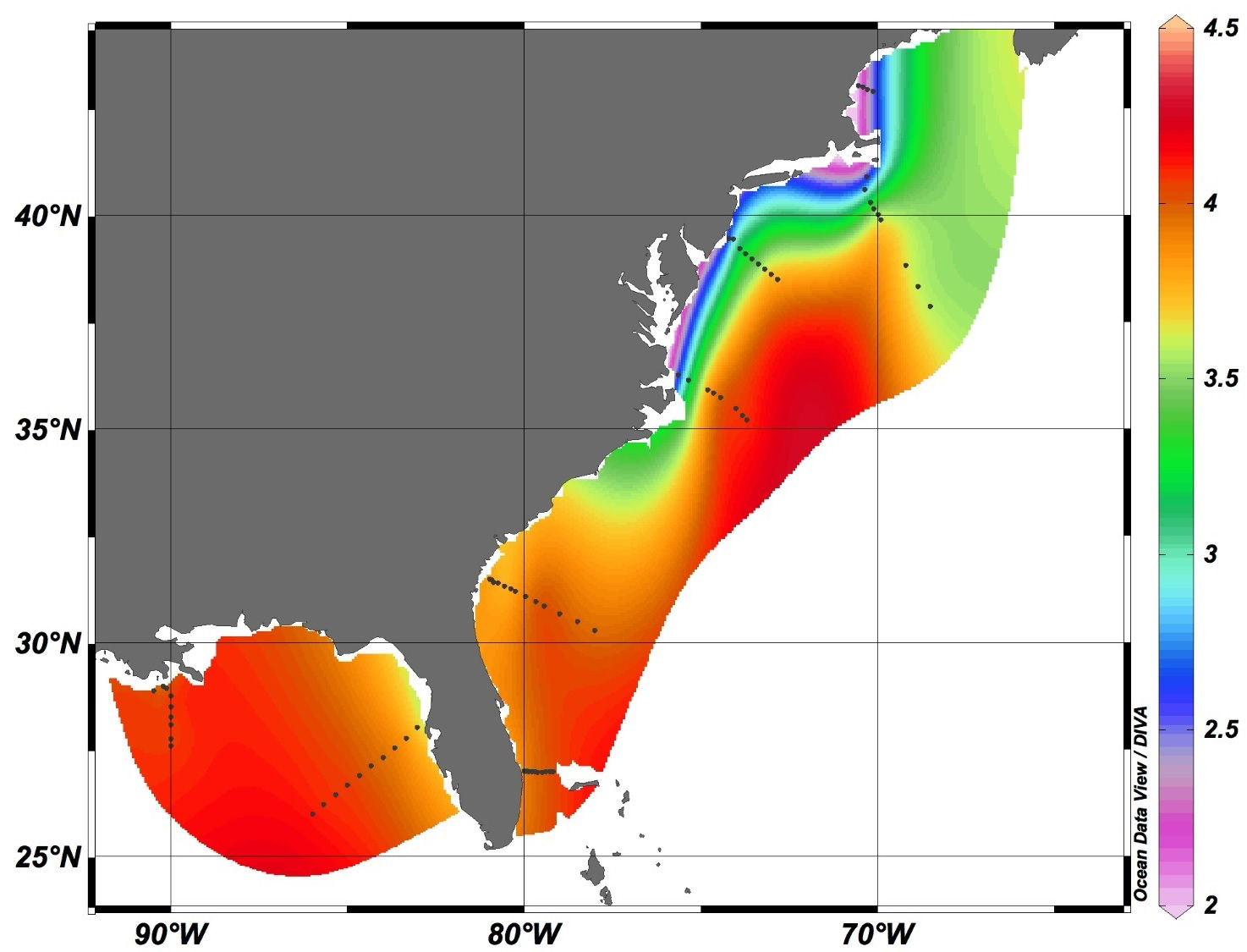Oceanic, Coastal, and Estuarine Ocean Acidification Observing
Networks: North Atlantic Ocean, East and Gulf Coast
Rik Wanninkhof and Leticia Barbero
 In this project we are developing the North Atlantic Ocean, East and Gulf Coast ocean acidification (OA) observing system in response to the requirements of the Federal Ocean Acidification Research and Monitoring (FOARAM) Act. The observing system will be used to determine patterns and trends in key geochemical indicators of ocean acidification. The observing network of the East and Gulf Coast is based on the following elements:
AOML leads the SOOP-CO2 effort, and the dedicated research cruises along the East and Gulf Coast. PMEL and academic partners maintain three moorings that are an integral part of the effort. The scientific component includes analysis of total alkalinity (TA) and dissolved inorganic carbon (DIC) samples taken on the SOOP and mooring efforts. Data reduction, quality control and data management of the large data sets are a critical component of the observing system. Data products and algorithms to extrapolate the OA indices in time and space will be developed as part of the effort. |
Data & Logistics for Coastal Cruises
| GOMECC-4 (2021) |
| GOMECC-3 (2017) |
| ECOA Cruises (2015/2018) |
| GOMECC-2 (2012) |
| GOMECC-1 (2007) |